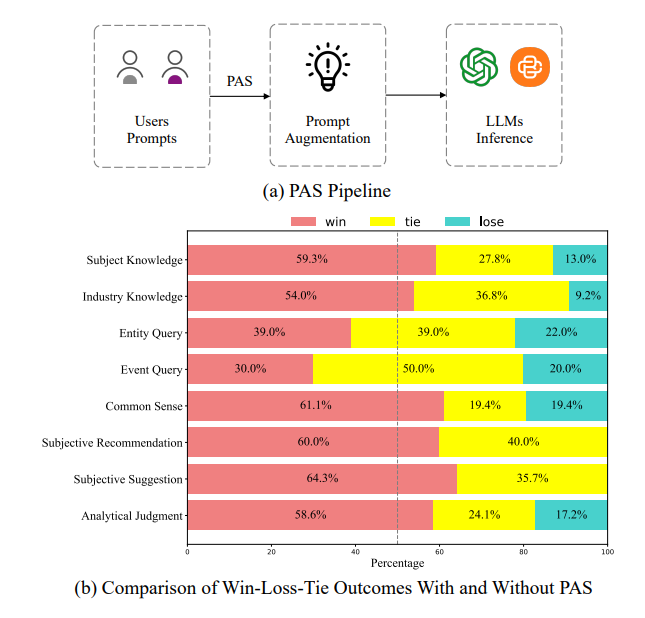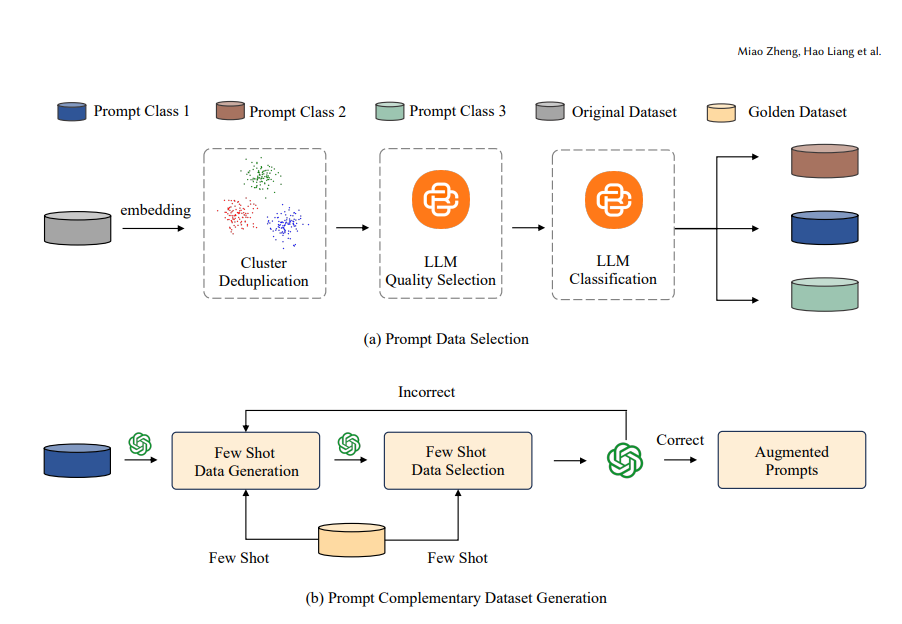In the field of artificial intelligence, prompt engineering plays a crucial role, which determines whether AI can accurately understand and respond to human needs. However, designing effective prompts is not easy and requires a deep understanding of how AI works and a lot of experimentation and optimization. This makes prompt engineering an insurmountable obstacle for ordinary users. To solve this problem, the research team of Peking University and Baichuan Technology developed PAS (Prompt Augmentation System), an intelligent prompt augmentation system based on a large language model, designed to improve AI's ability to understand and respond to human needs.
Prompt engineering can be called the language art of the AI world. It guides AI to more accurately understand human intentions through cleverly designed prompts, thereby giving appropriate responses. But this art is not easy. It not only requires a deep understanding of the operating mechanism of AI, but also repeated trials and optimizations for different tasks. This is undoubtedly an insurmountable gap for ordinary users.

In order to break this bottleneck, a group of scientists from Peking University and Baichuan Technology jointly developed a breakthrough solution - PAS (Prompt Augmentation System). This intelligent prompt enhancement system based on large language models (LLM) can automatically generate high-quality prompts, greatly improving AI's ability to understand and respond to human needs.
The advantages of PAS are mainly reflected in three aspects:
1. It is extremely efficient in data utilization, requiring only 9,000 data points to achieve optimal performance, which saves a lot of resources compared to traditional methods.
2. PAS has excellent compatibility and flexibility, can be seamlessly connected with various existing large-scale language models, and its applicable scope covers a variety of scenarios from daily chat to professional consultation.
3. PAS achieved the best results in multiple benchmark tests, with an average improvement of 6.09 percentage points, surpassing all existing methods.
The working principle of PAS can be simply summarized into two stages: screening of high-quality tips and automatic generation of supplementary tips. The system first selects high-quality tips from massive amounts of data and then uses small-scale learning techniques to create new ones. These newly generated tips also undergo a rigorous screening and regeneration process to ensure their quality.

In order to verify the actual effect of PAS, the research team conducted a series of rigorous experiments. They applied PAS to multiple large-scale language models, including GPT-4 and GPT-3.5, and conducted comprehensive evaluations on multiple benchmarks. The experimental results are encouraging: PAS has significantly improved the performance of AI in terms of logical reasoning, language translation, and question and answer capabilities, achieving the best results in all tests.
The emergence of PAS has undoubtedly injected new vitality into the development of AI technology. It not only greatly lowers the threshold for prompt engineering, allowing more ordinary users to easily control AI technology, but also paves the way for the further popularization and deepening of AI applications. As innovative technologies like PAS continue to emerge, we have reason to believe that AI in the future will become more intelligent and more understanding of people's hearts, bringing more convenience and surprises to our lives and work.
Paper address: https://arxiv.org/pdf/2407.06027
Project address: https://github.com/PKU-Baichuan-MLSystemLab
In short, the emergence of the PAS system has brought breakthrough progress to the field of AI prompt engineering. Its efficient, compatible and high-performance characteristics will greatly promote the application and development of AI technology and bring more convenient and smarter AI to users. experience. We look forward to further improvement and development of PAS in the future, bringing innovation and changes to more fields.